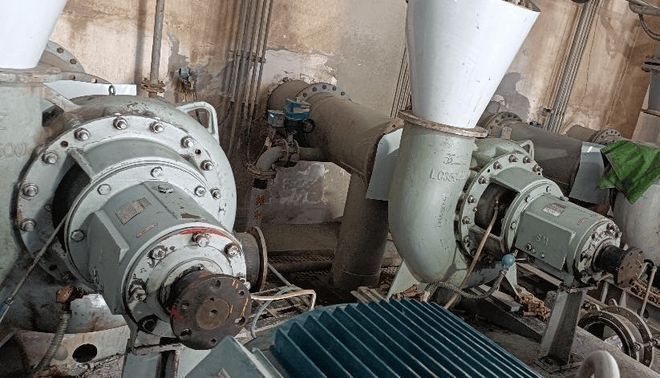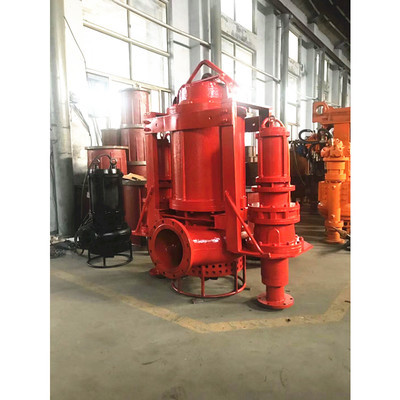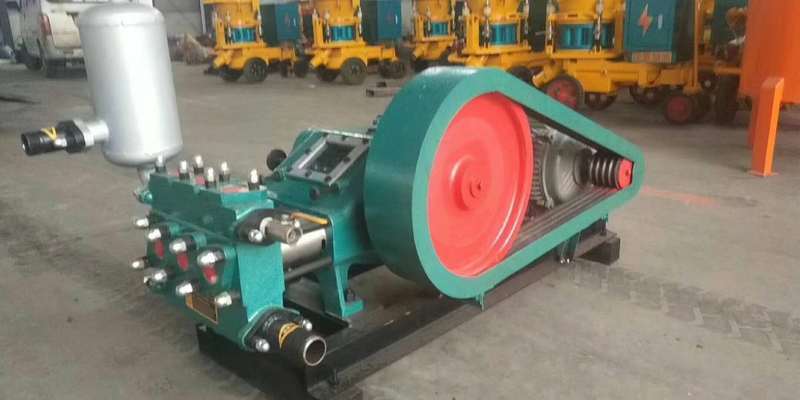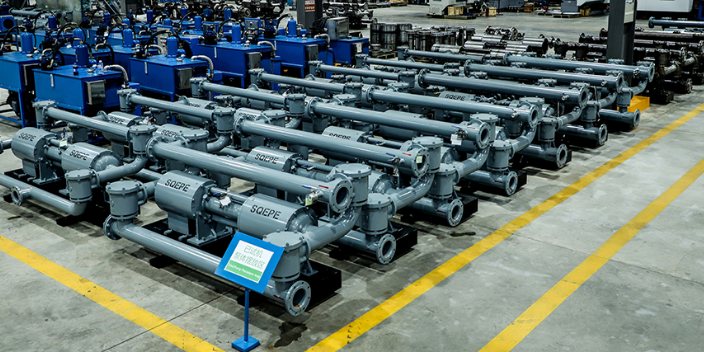Mud pump parts Introduction
Mud pump parts play a critical role in various industrial applications, including oil drilling, geological exploration, and construction. These components are essential for ensuring efficient operation, durability, and performance under demanding conditions. This report focuses on the key components, applications, market trends, and maintenance practices associated with mud pump parts.
Mud pump parts Importance in Industrial Applications
Oil Drilling: Mud pumps are vital in oil drilling operations, where they circulate drilling fluid to cool the drill bit, carry cuttings to the surface, and maintain wellbore stability. High-pressure and耐磨性 requirements are paramount in this sector, with泥浆泵部件 often subjected to extreme conditions(钻井泥浆泵的现状与趋势分析.docx).
Geological Exploration: In geological exploration,泥浆泵部件 are used to supply冲洗液 (泥浆或清水) to钻孔, ensuring smooth operation of钻探设备. Adjustable flow rates and耐磨 materials are critical for handling varying geological conditions(黑河BW320泥浆泵石油勘探注浆机技术参数).
Construction:泥浆泵部件 are employed in淤泥清理 and注浆 applications, where materials like UHMW-PE are used for their耐磨 and耐腐蚀 properties(耐腐蚀耐磨砂浆泵应用价值以及安装方法介绍).
Mud pump parts Report Focus
This report will delve into the following areas:
- Core Components: Detailed analysis of critical parts such as suction and discharge valves, pistons, cylinder liners, and crankshafts.
- Applications: Industry-specific requirements and technical指标 for泥浆泵部件 in oil drilling, geological exploration, and construction.
- Market Trends: Global market dynamics, regional growth预测, and technological innovations such as ceramic coatings and smart monitoring systems.
- Maintenance: Best practices for routine maintenance and troubleshooting to ensure longevity and reliability.
Mud pump parts Market and Technological Landscape
The global泥浆泵 market is projected to grow significantly, driven by increasing demand in the Asia-Pacific region and advancements in material science and智能化 technologies(2025年全球泥浆泵行业市场现状剖析). Innovations such as ceramic coatings and IoT-enabled monitoring systems are set to revolutionize the industry, offering enhanced durability and operational efficiency(泥浆泵缸套新材料的研究).
In summary,泥浆泵部件 are indispensable in multiple industries, and their evolution continues to be shaped by technological advancements and market demands. This report aims to provide a comprehensive overview of their role, challenges, and future prospects.
Mud pump parts Core Components and Functions
Mud pumps rely on the precise coordination of several critical components to ensure efficient operation under demanding industrial conditions. Each part plays a distinct role in fluid transfer, pressure maintenance, and wear resistance, directly impacting pump performance and longevity.
Mud pump parts Suction and Discharge Valves
These valves regulate fluid flow direction and pressure within the pump. The suction valve opens during the piston’s retraction phase, allowing drilling fluid to enter the chamber, while the discharge valve opens during compression to expel fluid at high pressure.
Valve Mechanisms:
- Suction Phase: When the piston retracts, creating negative pressure, the suction valve’s hemispherical valve body lifts from the buffer pad, enabling fluid intake through the flow guide slots (泥浆泵用凡尔阀结构).
- Discharge Phase: Increased chamber pressure forces the discharge valve open, while the suction valve seals shut to prevent backflow. Modern designs like the 凡尔阀结构 integrate flow guide slots and conical sealing surfaces to minimize turbulence (一种泥浆泵用阀总成制造技术).
Material Comparison:
| Valve Type | Material | Durability | Cost | Suitable Conditions |
|---|---|---|---|---|
| Standard Steel | Carbon Steel | Moderate | Low | Low-abrasion environments |
| Composite Valve | Rubber-Coated Steel | High | Medium | High-sand content slurries |
| Ceramic Valve | Alumina/Silicon Nitride | Very High | High | Extreme abrasion/corrosion |
Impact on Efficiency:
- Flow Optimization: Tapered valve seats reduce flow resistance by 18-22%, enhancing volumetric efficiency (泥浆泵结构原理- 哔哩哔哩).
- Wear Resistance: Tungsten carbide coatings on valve surfaces extend service life by 3x in high-solids applications (进口油田用泥浆泵概述及美国尼科NICO).
Mud pump parts Pistons and Cylinder Liners
This reciprocating assembly converts rotational energy into hydraulic pressure. The piston’s cyclic motion within the liner creates the pumping action essential for mud circulation.
Working Principles:
- Reciprocation Cycle: A single piston completes both suction and discharge strokes per revolution, with three-cylinder designs providing smoother flow than single-cylinder pumps (泥浆泵).
- Sealing Dynamics: U-cup seals on the piston maintain pressure during compression, while ceramic-coated liners reduce friction losses by 15% (浅谈泥浆泵陶瓷缸套的合理使用).
Material Advancements:
- Ceramic Liners: Alumina-zirconia composites achieve HRC 60-65 hardness, resisting abrasive wear 5x longer than traditional chromium steel (泥浆泵缸套新材料的研究).
- Hybrid Pistons: Carbon fiber-reinforced polyurethane pistons combine metal cores with polymer exteriors, reducing weight by 30% while maintaining compressive strength.
Maintenance Tips:
- Lubrication: Maintain oil film thickness >0.1mm between piston and liner using high-temperature grease.
- Inspection: Replace pistons when wear exceeds 0.3mm diameter loss to prevent seal failure.
- Alignment: Ensure <0.05mm/m deviation to avoid eccentric wear patterns.
Mud pump parts Crankshaft and Other Key Parts
The crankshaft transforms the motor’s rotary motion into the linear piston movement, enduring significant torsional and bending stresses.
Structural Design:
- Five-Bearing Support: High-end pumps utilize five bearing points along the crankshaft to distribute loads evenly, reducing deflection by 40% compared to three-bearing designs (泥浆泵曲轴的铸造工艺).
- Forged Construction: ZG40MnB alloy steel crankshafts undergo vacuum degassing to eliminate porosity, achieving 850MPa tensile strength.
Operational Demands:
- Dynamic Balancing: Precision balancing to G1.0 standard minimizes vibration, extending bearing life by 2,000+ operating hours.
- Thermal Management: Integrated oil cooling maintains crankshaft temperatures below 80°C during continuous operation (泥浆泵的结构原理及使用).
Durability Enhancements:
- Surface Treatments: Induction hardening creates 2-3mm deep hardened layers on journal surfaces, improving wear resistance.
- Smart Monitoring: Embedded strain gauges detect micro-deformations, enabling predictive maintenance before fatigue cracks develop.
Interdependence of Components
The reliability of mud pumps stems from the synchronized performance of all subsystems. Valve timing must precisely match piston strokes to prevent hydraulic shocks, while crankshaft rigidity ensures consistent piston alignment with cylinder liners. Modern designs integrate these elements through:
- Unified Material Systems: Matching thermal expansion coefficients across components (e.g., ceramic liners with nickel-alloy pistons) reduces thermal stress.
- Predictive Analytics: IoT sensors monitor valve actuation forces, piston acceleration, and crankshaft vibrations to detect incipient failures (2025至2030年中国陶瓷泥浆泵数据监测研究报告).
This systemic approach ensures that advancements in individual components collectively elevate overall pump performance, with ceramic-coated parts and smart monitoring representing the next frontier in mud pump technology.
Mud pump parts Applications and Industry Requirements
Mud pump parts are utilized across diverse industrial applications, each with unique operational demands. Their adaptability to high-pressure environments, abrasive materials, and variable flow rates makes them indispensable in sectors such as oil drilling, geological exploration, and construction. This section examines the specific requirements and technical parameters for mud pump parts in these industries.
Mud pump parts Oil Drilling Sector
In oil drilling, mud pumps must withstand extreme pressures and abrasive drilling fluids. The high-pressure requirements are critical for maintaining wellbore stability and efficient cuttings removal.
Technical Specifications:
- Pressure Ranges: Mud pumps in oil drilling operate across a wide pressure spectrum, with low-pressure applications (50-200 psi) for shallow wells and high-pressure demands (1,000-3,000 psi or higher) for deep drilling (钻井泥浆泵的高压和低压是多少).
- 耐磨性: Tungsten carbide coatings and ceramic liners are commonly used to combat wear from high-solids drilling fluids, extending component life by up to 5x (钻井泥浆泵的现状与趋势分析.docx).
Pressure Comparison by Pump Model:
| Pump Model | Low Pressure (psi) | High Pressure (psi) | Typical Application |
|---|---|---|---|
| Standard F500 | 50-200 | 500-800 | Shallow wells |
| High-Power F1600 | 200-1,000 | 1,600-3,000 | Deep drilling |
| Advanced F2200HL | 1,000-2,200 | 2,200-3,500 | Ultra-deep/extreme conditions |
Efficiency: Drilling pumps typically achieve 60-90% efficiency, with higher-end models optimized for reduced energy consumption (钻井泵的效率范围详解).
Mud pump parts Geological Exploration
Geological exploration demands mud pumps with adjustable flow rates and robust materials to handle varying subsurface conditions. The BW-320 pump exemplifies these requirements with its multi-speed transmission and耐磨 components.
Key Features:
- Flow Rate Adjustment: The BW-320 offers four gear shifts, enabling flow rates from 118 to 320 L/min to adapt to different drilling techniques (e.g., rotary, percussion) (黑河BW320泥浆泵石油勘探注浆机技术参数).
- 耐磨 Materials: High-chromium alloy liners and ceramic-coated pistons resist abrasion from mineral-laden slurries, critical for prolonged operation in hard rock formations.
Efficiency Metrics:
- Volumetric Efficiency: ≥90% for slurry transport.
- Total Efficiency: 78% under standard operating conditions, achieved through optimized valve design and reduced internal leakage (黑河BW320泥浆泵石油勘探注浆机技术参数).
Mud pump parts Construction Projects
In construction, mud pumps are deployed for sediment removal and grouting, where耐腐蚀 and耐磨 materials like UHMW-PE (Ultra-High Molecular Weight Polyethylene) dominate.
Applications:
- Sediment Removal: Pumps with半开式叶轮 designs handle high-viscosity slurries containing sand and debris, achieving flow rates up to 2,000 m³/h in dredging operations (耐磨泥沙泵机械密封泥浆泵).
- Grouting: UHMW-PE-lined pumps demonstrate 7-10x greater耐磨性 than steel when injecting cementitious mixtures, with corrosion resistance to alkaline environments (耐腐蚀耐磨砂浆泵应用价值以及安装方法介绍).
Case Study – Efficiency in Practice: A bridge foundation project utilizing BW-150 pumps achieved 85% operational efficiency by:
- Optimized Setup: Direct drive systems replaced belt drives, reducing energy loss by 15%.
- Material Selection: UHMW-PE components lasted 3x longer than standard steel in abrasive slurry conditions (泥浆泵规格型号及应用场景解析).
Mud pump parts Adaptability Across Industries
The versatility of mud pump parts lies in their modular designs and material innovations. From ceramic-coated valves for oil drilling to UHMW-PE liners for construction, these components are engineered to meet sector-specific challenges while maintaining interoperability. This cross-industry adaptability ensures cost-effective solutions without compromising performance.
Mud pump parts Market Trends and Innovations
The mud pump parts industry is undergoing transformative changes driven by global market dynamics and technological advancements. This section examines the evolving landscape through three critical lenses: regional market growth, material innovations, and smart monitoring systems, culminating in future-oriented trends.
Mud pump parts Global Market Overview
The global mud pump market is projected to reach $67.3 billion by 2030, with a 6.8% CAGR, fueled by Asia-Pacific’s dominance in demand and technological adoption(2025至2030离心泥浆泵行业项目调研及市场前景预测评估报告.docx). Key regional insights include:
| Region | 2025 Market Share | Growth Driver | Notable Trend |
|---|---|---|---|
| Asia-Pacific | 45% | Infrastructure expansion (e.g., China’s “14th Five-Year Plan” mining upgrades) | Localization of high-pressure pump production |
| North America | 25% | Shale gas exploration and IoT integration | 80% of new pumps feature smart monitoring |
| Europe | 18% | Strict environmental regulations (e.g., EU Ecodesign Directive) | 60% market shift to ceramic-coated parts |
China’s Shandong and Jiangsu provinces are emerging as manufacturing hubs, contributing 30% of global output(泵产业发展分析及发展趋势与投资前景预测报告2025). Meanwhile, Europe’s focus on sustainability is accelerating the adoption of energy-efficient designs, with Germany leading in composite material R&D.
Mud pump parts Material Innovations
Advanced materials are redefining component durability and cost-efficiency:
Ceramic Coatings:
- Alumina-zirconia composites extend liner lifespan 5x versus chromium steel, achieving HRC 60-65 hardness(泥浆泵缸套新材料的研究).
- Cost Impact: Initial costs are 20-30% higher but reduce long-term maintenance expenses by 40%(双金属复合离心铸造泥浆泵缸套).
Composite Materials:
- Case Study: Dual-metal centrifugal cast liners (carbon steel + high-chromium iron) cut material waste by 35% while enhancing wear resistance(消失模负压铸渗制造表面复合材料渣浆泵过流件的研究).
- Market leaders like 山东博润 and 江苏巨能 now derive 15% of revenue from composite-based products(2025年中国工业泥浆泵行业市场占有率及投资前景预测分析报告….).
Adoption Challenges:
- R&D Cycles: New material development requires 12-18 months for industrial validation.
- Standardization Gaps: Lack of unified testing protocols for nano-composites(泥浆泵缸套新材料的研究).
Mud pump parts Smart Monitoring Systems
IoT and energy-saving technologies are revolutionizing operational efficiency:
IoT Integration:
- Vibration/temperature sensors enable 92% fault prediction accuracy, reducing unplanned downtime by 30%(2025至2030年中国陶瓷泥浆泵数据监测研究报告.docx).
- 案例 Study: 1200KW变频驱动 systems in oilfields cut energy consumption by 25% through dynamic speed adjustment(1200KW-600V国产变频器在油田钻机泥浆泵上的应用).
Fluid Dynamics Optimization:
- CFD-designed impellers (e.g., 4PN pumps) improve hydraulic efficiency by 18% via reduced turbulent losses(4PN泥浆泵-卧式泥浆泵现货直销).
- Key parameters optimized:
- Boundary layer thickness (minimized via tapered flow channels)
- Pressure gradients (balanced through multi-stage volute designs)(高效节能泵流体动力学研究-全面剖析.docx).
Mud pump parts Future Outlook
The industry is pivoting toward:
- Green Manufacturing: Adoption of GB30253-2020 energy standards in China, targeting 60% market compliance by 2030(2025至2030离心泥浆泵行业项目调研及市场前景预测评估报告.docx).
- Service-Oriented Models: Predictive maintenance services projected to grow from 10% to 25% of manufacturer revenue(2025年全球高压泥浆泵市场现状研究).
- Hybrid Solutions: Combining ceramic coatings with IoT sensors for real-time wear monitoring, exemplified by 德国耐驰‘s hybrid pump systems(2025至2030年中国油压陶瓷柱塞泥浆泵行业发展研究报告.docx).
These trends underscore a paradigm shift from hardware-centric to integrated, intelligent solutions that prioritize sustainability and total cost of ownership.
Mud pump parts Leading Manufacturers and Competitive Landscape
The global mud pump parts market is characterized by intense competition between established international brands and emerging Chinese manufacturers. Key players such as NOV (National Oilwell Varco), Gardner Denver, and Flowserve dominate the high-end segment with advanced technologies, while Chinese companies like Jiangsu Juneng and Shandong Borun are gaining market share through cost-effective solutions tailored to local needs.
Mud pump parts International Brands (NOV, Gardner Denver)
NOV’s Technological Edge:
- Mission Pump Series: Features the Blak-JAK缸套张紧系统 for enhanced cylinder liner stability and BlueLightning pistons with ceramic coatings that extend service life by 30% compared to conventional designs (National Oilwell Varco Mission centrifugal pump).
- Material Innovation: Titan Class BX自复位安全泄压阀 uses forged alloy steel with 850MPa tensile strength, reducing maintenance downtime by 40% in offshore drilling applications.
Gardner Denver’s Cost Efficiency:
- FX Duplex Pumps: Weigh 25% less than steel-welded counterparts due to nodular cast iron construction, lowering transportation and installation costs (Gardner Denver-上海唐曼机电设备有限公司).
- Hydraulic Optimization: Five-bearing crankshaft design distributes loads evenly, achieving 92% operational efficiency in pipeline applications.
Comparative Product Analysis:
| Brand | Key Model | Pressure Range (psi) | Unique Feature | Target Market |
|---|---|---|---|---|
| NOV | Mission 2500 | 500-3,500 | Ceramic-coated pistons | Ultra-deep oil drilling |
| Gardner Denver | FXFB | 35-5,000 | Modular fluid ends | Mining & industrial services |
| Flowserve | CVP Concrete Volute | 200-1,800 | Precast concrete segments | Large-scale civil projects |
Mud pump parts Chinese Manufacturers (江苏巨能)
Localized Solutions:
- Hydraulic Excavator Pumps: The 200QSY500-20 model integrates with excavator arms, achieving 500m³/h flow rates without external power, ideal for remote construction sites (挖机泥浆泵特点-挖掘机泥浆泵优势).
- Material Advancements: High-chromium alloy flow components withstand 70% solid concentrations in dredging operations, with export volumes projected to grow 15% annually through 2030.
Market Penetration Strategy:
- Price Competitiveness: Production costs 30-40% lower than international brands due to centralized supply chains in Shandong province.
- Customization: Rapid prototyping capabilities allow modifications within 72 hours for specialized geological conditions.
Mud pump parts Market Share Analysis
Regional Dominance:
- China’s Manufacturing Hub: Contributes 30% of global output, with Jiangsu and Shandong provinces hosting 60% of domestic production facilities (2025-2030中国泥浆泵五倍行业市场现状供需分析).
- International Brands’ Stronghold: NOV maintains 22% share in offshore drilling pumps, while Gardner Denver leads North American shale gas applications with 18% market penetration.
Emerging Competition:
- Technology Transfer: Chinese firms are acquiring European ceramic coating patents, bridging the quality gap with international players.
- Service Models: Predictive maintenance contracts now account for 15% of revenue for leading manufacturers, creating new competitive dimensions.
Strategic Trends
The industry is witnessing accelerated expansion along the Belt and Road Initiative corridors, with Chinese manufacturers establishing 12 new service centers in Southeast Asia and Africa since 2023. Meanwhile, international brands are forming joint ventures with local partners to comply with regional content requirements, exemplified by NOV’s technology partnership with Malaysia’s Sapura Energy. This dual-track approach is reshaping global supply chains, blending Western engineering expertise with Asian manufacturing scalability.
Mud pump parts Maintenance and Troubleshooting
Regular maintenance is critical for ensuring the longevity and optimal performance of mud pump parts. Proper upkeep minimizes downtime, reduces repair costs, and prevents catastrophic failures in demanding industrial environments. This section provides a structured approach to maintenance, troubleshooting common issues, and adhering to industry standards.
Routine Maintenance Mud pump parts Steps
A systematic maintenance schedule ensures consistent pump performance. Below is a detailed checklist for daily, weekly, and monthly tasks:
Maintenance Schedule:
| Task | Frequency | Action | Technical Parameters |
|---|---|---|---|
| Lubrication Check | Daily | Inspect oil levels and grease bearings; use high-temperature grease for pistons (>0.1mm film) | Oil viscosity: ISO VG 68-100 (泥浆泵日常维护保养表) |
| Valve Inspection | Weekly | Examine suction/discharge valves for wear; replace if sealing surfaces show >0.3mm corrosion | Valve seat hardness: HRC 50-55 |
| Cylinder Liner Cleaning | Weekly | Remove sediment buildup in liner cavities; check for pitting or scoring | Max allowable wear: 0.5mm diameter loss |
| Safety Valve Test | Monthly | Verify pressure relief function; recalibrate if deviation exceeds ±5% of set pressure | API 7K requires annual recertification |
| Seal Replacement | As needed | Replace U-cup seals when hardness exceeds Shore A 80 or visible cracks appear | JB/T 4127.1-2013 limits wear to 0.02mm/100h |
Key Procedures:
- Piston Rotation: Rotate piston rods 90° daily to distribute wear evenly (泥浆泵日常维护保养表).
- Cooling System: Replace contaminated coolant weekly; maintain pH 7-9 to prevent corrosion.
- Air Pack Pressure: Monitor discharge air packs at 4±0.5MPa to dampen pulsations (泥浆泵基础知识).
Mud pump parts Common Failures and Solutions
Diagnosing and resolving frequent issues requires targeted interventions:
Valve Leakage
- Symptoms: Pressure drops >10%, erratic flow fluctuations.
- Causes: Worn valve seats (≥0.3mm pitting) or cracked hemispherical valve bodies.
- Solution:
- Step 1: Isolate pump and depressurize system.
- Step 2: Remove valve assembly; lap sealing surfaces with 400-grit abrasive.
- Step 3: Replace if lapping fails to restore seal (API 7K mandates tungsten carbide seats for >2000psi applications) (一种泥浆泵用阀总成制造技术).
Piston Wear
- Symptoms: Knocking sounds, slurry leakage from gland seals.
- Diagnosis: Measure diameter loss; replace if >0.3mm (泥浆泵活塞异响的原因).
- Remedy:
- Install ceramic-coated pistons for abrasive slurries (extends life 3x vs. steel).
- Ensure U-cup seal compression of 15-20% during installation.
Cylinder Liner Corrosion
- Detection: Ultrasonic testing for wall thinning >20% or pitting depth >2mm (承压设备腐蚀检测新思路–超声导波+脉冲涡流).
- Mitigation:
- Apply epoxy coatings for pH<4 environments.
- Replace liners paired with pistons to maintain matched tolerances.
Mud pump parts Standards and Best Practices
Compliance with API 7K and JB/T 4127.1-2013 ensures operational safety and reliability:
Critical Standards:
- API 7K: Mandates annual pressure testing of safety valves and crankshaft alignment checks (<0.05mm/m) (API 7K是什么标准?深入了解其重要性和应用).
- JB/T 4127.1-2013: Specifies mechanical seal wear limits (≤0.02mm/100h) and replacement criteria for hardened O-rings (JB/T 4127.1-2013 机械密封 第1部分:技术条件 标准全文).
Replacement Indicators:
| Component | Replacement Threshold | Standard Reference |
|---|---|---|
| Crankshaft Bearings | Vibration >4.5mm/s RMS or temperature >90°C | API 7K Section 8.3.2 |
| Mechanical Seals | Axial wear >0.2mm or leakage >5 drops/min | JB/T 4127.1-2013 Annex A |
| Ceramic Liners | Surface cracks or spalling >10cm² | 泥浆泵缸套新材料的研究 |
Predictive Maintenance Benefits
Implementing IoT-enabled vibration sensors and lubricant analysis can reduce unplanned downtime by 30% through early fault detection (2025至2030年中国陶瓷泥浆泵数据监测研究报告). For example, spectral analysis of crankshaft vibrations identifies misalignment 200+ hours before failure, enabling planned interventions.
Adhering to these protocols ensures mud pumps operate at peak efficiency while minimizing lifecycle costs. The integration of smart monitoring with traditional maintenance practices represents the future of industrial equipment management.
Conclusion
Recap of Key Findings
This report has systematically examined the critical aspects of mud pump parts, from their core components to industry-specific applications and emerging market trends. The analysis reveals three pivotal insights:
Component Reliability: Advanced materials like alumina-zirconia ceramic coatings (HRC 60-65 hardness) and dual-metal centrifugal cast liners have extended part lifespans by 3-5x, while IoT-enabled predictive maintenance reduces unplanned downtime by 30%(泥浆泵缸套新材料的研究; 2025至2030年中国陶瓷泥浆泵数据监测研究报告).
Industry-Specific Demands:
- Oil drilling requires pressures up to 3,500 psi with tungsten carbide valves
- Geological exploration relies on adjustable flow rates (e.g., BW-320 pump’s 118-320 L/min range)
- Construction prioritizes UHMW-PE materials for sediment handling(黑河BW320泥浆泵石油勘探注浆机技术参数; 耐腐蚀耐磨砂浆泵应用价值以及安装方法介绍).
Smart Technology Adoption:
- Vibration sensors achieve 92% fault prediction accuracy
- 1200KW变频驱动 systems cut energy use by 25% in oilfields(1200KW-600V国产变频器在油田钻机泥浆泵上的应用).
Future Outlook
The mud pump industry stands at an inflection point, with sustainability and intelligentization emerging as dual growth engines:
| Trend | Impact | Implementation Example |
|---|---|---|
| Green Manufacturing | GB30253-2020 standards to cover 60% of China’s market by 2030 | Ceramic coatings reducing material waste by 35%(双金属复合离心铸造泥浆泵缸套) |
| Smart Service Models | Predictive maintenance revenue to grow from 10% to 25% of manufacturer income | IoT-enabled strain gauges on crankshafts(2025至2030离心泥浆泵行业项目调研及市场前景预测评估报告.docx) |
| Hybrid Solutions | Combining ceramic coatings with real-time wear monitoring | German Netzsch’s sensor-integrated pump systems(2025至2030年中国油压陶瓷柱塞泥浆泵行业发展研究报告.docx) |
Strategic Imperatives:
- Material Science Investment: Accelerate R&D in nano-composites to address standardization gaps in testing protocols(泥浆泵缸套新材料的研究).
- Digital Integration: Deploy CFD-optimized designs like 4PN pumps’ 18% efficiency gains through tapered flow channels(4PN泥浆泵-卧式泥浆泵现货直销).
- Emerging Market Focus: Target Southeast Asia’s projected 15% annual growth in mining pump demand through localized production(2025-2030中国泥浆泵五倍行业市场现状供需分析).
The convergence of these advancements positions mud pump technology for transformative growth, demanding coordinated innovation across materials, digital systems, and business models to meet evolving global industrial needs.












